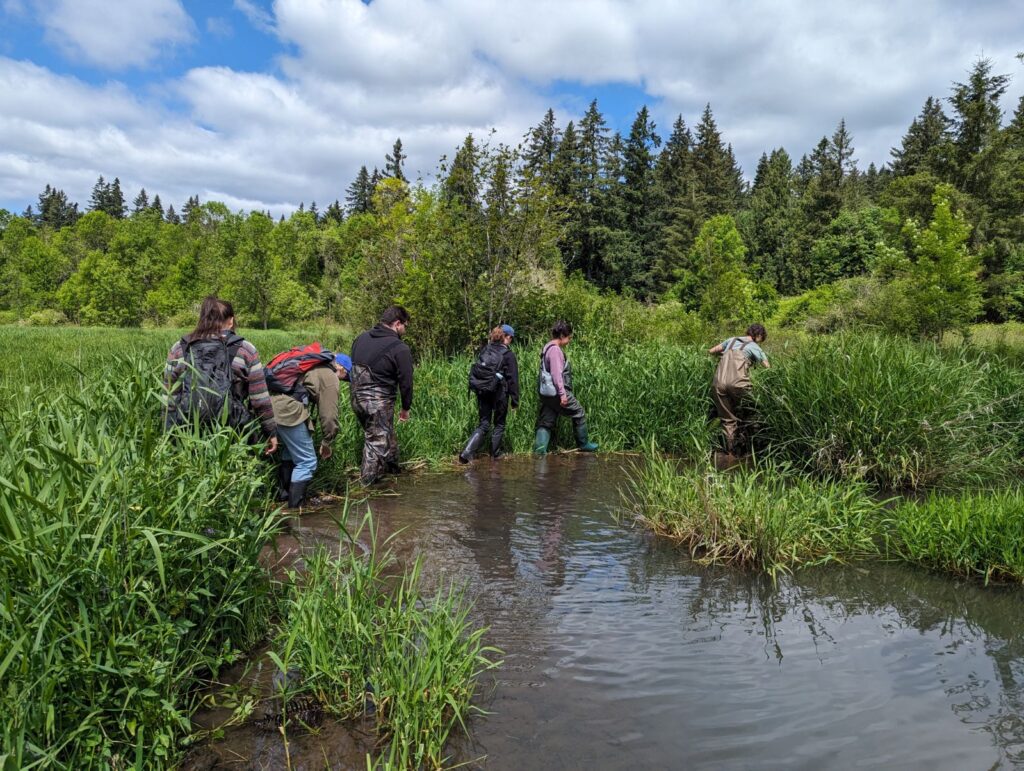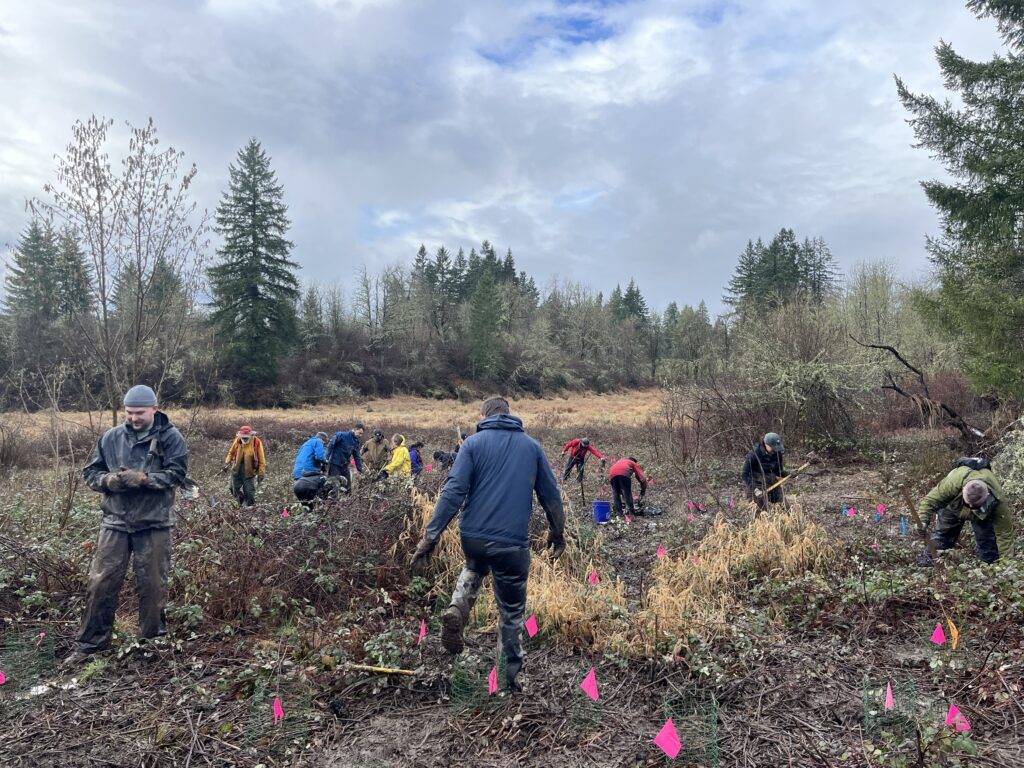Restoring Indigenous land and knowledge, one field day at a time

Happy Native American Heritage Month! While we should honor, recognize, and celebrate Indigenous peoples year-round, November is a month to dedicate more time to our learning journey about Indigenous peoples’ history, culture, knowledge, and leadership. Over the last year, Bark has been learning A LOT from our partners over at Parrott Creek’s Cultural Ecology Project.
Headed by Cultural Ecology Project Manager Ameyalli “Ame” Manon-Ferguson, Parrott Creek’s Cultural Ecology Project focuses on restoring an 80-acre site so that it can be a space where Indigenous people can safely gather natural resources such as foods, medicines, and weaving materials while connecting with the land and their communities and traditions. In addition to restoration field days, Ame and her colleague, Cultural Ecology Program Coordinator Autumn Martinez, host community workshops on topics such as cedar pulling for basketry and regalia; cattail, hazel and vine maple harvesting; lamprey and beaver surveys, and more. Given that many Indigenous folks can’t always (or easily) access these sorts of natural and cultural resources in places like the lands now known as Mt. Hood National Forest, this project provides urban Natives with culturally appropriate access and education in Indigenous Traditional Ecological Knowledge that ensures their cultures’ wisdom can be actively practiced and passed down for generations to come.

One of the many ways we can help Indigenous communities is by lending our capacity. That’s where Bark comes in. In this case, Bark’s been bringing our volunteer power to the Parrott Creek site to remove invasive plants, plant native plants, lead beaver surveys, and help with trail maintenance. It’s straightforward work that addresses complex issues, like the legacy of land theft and cultural erasure that undergirds our national forests (and much conservation work more broadly).
While Bark can’t undo these historical harms, every restoration day at Parrott Creek is an opportunity to learn more about the stories, traditions, and knowledge of the Indigenous peoples that have been here since time immemorial and that still call our region home today. For instance, learning the stories of each plant and animal and how they fit into the human community has helped me get to know the species around me far more than Latin binomials ever have.

A vital part of this work is funding from the Bark community. This week, we hope you’ll continue to support Bark while also supporting our friends at Parrott Creek.

While we want to shift the focus this week to Native American Heritage month, we’d like to take a moment to express our deepest gratitude for each and all of you, who make our work possible. Whether you’ve made a one-time or monthly contribution, participated in a Restoration field day (our next Parrott Creek day is this Sunday), or signed up to join us at our upcoming Community Confluence Conference (where Ame will be a panelist!), please know that your support has not gone unnoticed.
THANK YOU!! We’re so glad you’re a part of the Bark community and are grateful for the impact you’ve had on this organization and our partners like Parrott Creek.
In solidarity,
